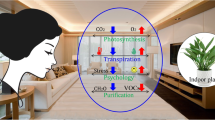Summary
Aone year survey of indoor radon and thoron concentrations was carried out in offices and dwellings of the Gunma prefecture, Japan. A passive integrating radon and thoron discriminative monitor was used in the survey. The annual mean radon concentration was 22±14 Bq . m-3, and ranged from 12 to 93 Bq . m-3 among the 56 surveyed rooms. Radon concentration in offices was generally higher than that in the dwellings, with the arithmetic averages of 29 and 17 Bq . m-3, respectively. Radon concentrations were generally lower in the traditional Japanese wooden houses than those houses built with other building materials. Seasonal variation of indoor radon was also observed in this survey. Compared to summer and autumn, radon concentrations were generally higher in spring and winter. The mean value of thoron to radon ratio was estimated to be 1.3, higher values were observed in the dwellings than in the offices. The annual effective dose from the exposure to indoor radon was estimated to be 0.47 mSv after taking the occupancy factors of offices and dwellings into account.
Similar content being viewed by others
Author information
Authors and Affiliations
Rights and permissions
About this article
Cite this article
Sugino, M., Tokonami, S. & Zhuo, W. Radon and thoron concentrations in offices and dwellings of the Gunma prefecture, Japan. J Radioanal Nucl Chem 266, 205–209 (2005). https://doi.org/10.1007/s10967-005-0893-4
Issue Date:
DOI: https://doi.org/10.1007/s10967-005-0893-4




